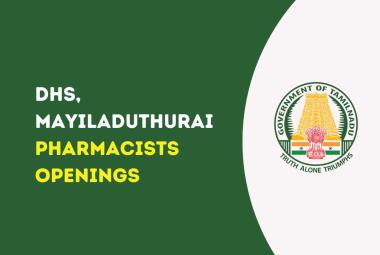 About Author:
About Author:
NITESH.P.SHARMA, AJAY.GUPTA
IDEAL COLLEGE OF PHARMACY AND RESEARCH, KALYAN
MUMBAI UNIVERSITY
Sharmanitesh479@yahoo.com
ABSTRACT:
The antibacterial activity of essential oils and their derivatives has been recognized for a long time. In the present study, the antibacterial properties of the essential oils obtained from the seeds of Seseli indicum, of Apiaceae family a wild weed found in the flood prone area of river Tapti, Gorakhpur (India). The essential oil obtained from seed was 3.4%. Essential oils were investigated for activity against Escherichia coli, Staphylococcus aureus and Bacillus subtilis using a punched-hole method. Essential oils inhibited all bacteria at both, low and high concentration. The results of this study confirmed the possibility of using Seseli indicum essential oils in broad spectrum antibacterial activities.
[adsense:336x280:8701650588]
Reference Id: PHARMATUTOR-ART-1335
INTRODUCTION:
Since the middle ages, essential oils have been widely used for bactericidal, virucidal, fungicidal, antiparasitical, insecticidal, medicinal and cosmetic applications, especially nowadays in pharmaceutical, sanitary, cosmetic, agricultural and food industries. Seseli is an old Greek name that was called by Hippocrates for certain members of the Apiaceae family. The genus Seseli L., belongs to the Apiaceae family which is composed of aromatic herbs and economically important species that are used as foods, spices, condiments and ornamentals. The seeds of an Indian species, Seseli indicum, have been reported to possess anthelmintic, carminative, stomachic and stimulant properties. Several biological activities particularly focused on essential oils of Seseli species, including fungutoxic, insect-repellent and antimicrobial activity were reported. reported a significant and dose-dependent anti-inflammatory activity in carrageenan-induced acute inflammations in rats and analgesic effect was assessed by acetic acid-induced writhing and hot plate tests in mice for seselin, a common coumarin isolated from Seseli indicum seeds. However, the compound was reported to devoid of anticonvulsant and antipyretic activities and also was found safe in doses up to 6 g/kg (oral) in 72 h mortality study in mice.
In the present work, two gram positive bacteria and one gram negative bacteria were used to evaluate antibacterial activities of essential oil of Seseli indicum due to it was scarcity of literature particularly on this species but plenty of work have been done on the genera of Seseli.
[adsense:468x15:2204050025]
Methods:
Plant Materials:
Seeds of Seseli indicum was collected as wild weeds of Umbelliferae family, a large and wide-spread family which is represented by almost 455 genera and 3600-3750 species in thEworld. Seseli indicum, of umbelliferae family a wild weed found in the flood prone area of river Tapti, Gorakhpuur (India). Plant Seseli is a genusof herbaceous perennial plants. They are sometimes woody at base with a conic taproot. Leaf blades are 1-3-pinnate or pinnately decompound. Umbels are compound, with bracts few or absent. Petals are white or yellow, and the fruit ovoid or ellipsoid.
Isolation of essential oils
The essential oils of the species were produced by the Clevenger hydrodistillation method. Plant materials (100 g), cut into small pieces, were placed in a distillation apparatus with 2: l of double distilled water and hydrodistilled for 3 h. After the oils were dried over anhydrous sodium sulphate, they were stored at 4 oC (Deans & Svoboda, 1990).
Test organisms
Staphylococcus aureus, MTCC 96 (gram-positive), Escherichia coli MTCC 739 (gram-negative) and Bacillus subtilisMTCC 121 (gram-positive) were procured from IMTECH,Chandigarh. The strains were confirmed for their purity and identity by Gram’s staining method and their characteristic biochemical reactions. The selected strains were preserved by sub culturing them periodically on nutrient agar slants and storing them under frozen condition. For the study, fresh 24 hour broth cultures were used after standardization of the culture.
Determination of antibacterial activity by punched-hole method
The essential oils were tested for antibacterial activity by punched-hole method (Pharmacopoeia of India,1996). The test organisms were inoculated in nutrient broth was incubated for 48 hrs. A definite volume of this suspension was spread out on agar surface (beef extract:1gram, yeast:2gram, peptone:5gram, NaCl:5gram, agar:15gram, distill water:1000ml, pH should maintain at- 6.8-7.2 with 5 molar NaOH) with a sterile bent glass rod. The surface of agar plates was pierced using a sterile cork borer. The prepared wells were filled with equal volume of a 50 µl/ml & 100 µl/ml into the wells. After a period of pre-incubation diffusion, the plates were incubated face up for a definite time and at the specified temperature. For the strains the diameter of zone of inhibition were measured.
NOW YOU CAN ALSO PUBLISH YOUR ARTICLE ONLINE.
SUBMIT YOUR ARTICLE/PROJECT AT articles@pharmatutor.org
Subscribe to PharmaTutor Alerts by Email
FIND OUT MORE ARTICLES AT OUR DATABASE
Results and Discussion:
Essential oil content and antibacterial activity
The essential oil obtained from seeds of Seseli indicum was 3.4%. The inhibition zone was measured by measuring the diameter which indicates the antibacterial activity of essential oil. The essential oil was found to be slightly active against Staphylococcus aureus at low concentration (50µl/ml) and at high concentration (100µl/ml) it was moderately active (table-1). It was moderately active against Bacillus subtilis at low concentration while at high concentration it showed highly active. The essential oil was found highly active in both at low and high concentration againstEscherichia coli.
The inhibition zone were observed maximum (17mm) in Escherichia coli and minimum (10mm) in Staphylococcus aureus at high concentration while at low concentration the inhibition zone were observed maximum (13mm) inEscherichia coli and minimum (6mm) in Staphylococcus aureus at low concentration (fig.2).
Thus, essential oil was found highly active against gram negative organisms like Escherichia coli at both the concentration i.e. low and high concentrations and then at high concentration it was found highly active against gram positive bacteria like Bacillus subtilis but in other gram positive bacteria like Staphylococcus aureus showed least activity in both low and high concentration.
Different microbial species and strains have different degrees of sensitivity to different chemotherapeutic agents. Moreover the susceptibility of a microorganism can change with time, even during therapy with a specific drug (Tartotra et. al., 2005).The inhibition of microbial growth under standardized conditions may be utilized for demonstrating the therapeutic efficacy of antibacterial compounds. Any subtle change in the antibiotic molecule, which may not be detected by chemical methods, will be revealed by a change in the antimicrobial activity and hence microbial assays are useful for resolving doubts. Determination of antimicrobial effectiveness against specific pathogens is essential for proper therapy. Testing can show which agents are most effective against a pathogen and give an estimate of proper therapeutic dose (Presscott, Harley and Kleins, 2008).
The result indicated that oil of Seseli indicum showed antibacterial activity which is accordance with Syed et al., 1989. It was also observed that activity was mainly against gram negative bacteria (E. coli). The oil also exhibited an effect against the gram positive bacteria (S. aureus). However, this effect was less efficient than that presented against the gram positive bacterium since a higher inhibitory zone was obtained with gram negative bacteria. The gram positive and gram negative micro-organism differ in several aspects other than with respect to structure of their cellular walls, mainly with regards to the presence of lipoproteins and lipopolysaccharides in gram negative bacteria that form a barrier to hydrophobic compounds (Zhao et al., 2001; Mazutti et al., 2008)
CONCLUSION):
The results of the antibacterial activity tests indicate that essential oil of S. indicum exhibited higher activity against the tested strains and confirms its traditional uses.
ACKNOWLEDGEMENT:
I will like to acknowledge to my colleague Ajay gupta for his support and encouragement.
References:
1. Tartotra, G.J.; Funke, B.R.; Case, C.L. (2005) “Microbiology An Introduction” 8th Ed.; X Published by Pearson Education Pte Ltd.New Delhi.
2. Presscott, Harley and Kleins (2008). “Microbiology” 7th Ed.; Published by Mc Graw Hill U.S. Hamlyn P., (1969) The Marshall Cavendish, Encyclopedia of Gardening, vol. 19Garrod and Lofthouse International, London, p. 2034.
3. Crowden R.K., Harborne J.B., Heywood V.H., (1969). Chemosystematics of the Umbelliferae – a general survey Phytochemistry, 8, 1963–1984.
4. Pimenov M.G., Leonov M.V., (1993): The Genera of the Umbelliferae Whitstable Litho,Whitstable,Kent.
5. Tandan S.K., Chandra S., Tripathi H.C., Lal J., (1990): Pharmacological actions of seselin, a coumarin from Seseli indicum seeds Fitoterapia, 61, 360–363.
6. Chaturvedi R.V., TripathiS.C., (1989). Fungutoxic, physico-chemical and phytotoxic properties of essential oil of Seseli indicum W and A Journal of Phytopathology, 124, 316–322.
7. Pharmacopoeia of India; Ministry of Health and Family Welfare; II; 1996; Controller of Publications,Delhi; A-100-A-109.
8. Dixit V., Chaturvedi R.V., TripathiS.C., (1992). Evaluation of some essential oils against Pulse Bettle (Callosobruchus chinensis).NationalAcademy Scientific Letters, 15, 255–257.
9. Syed M., Chaudhary F.M., Bhatty M.K., (1989). Antimicrobial activity of the essential oils of Umbelliferae family. Part VIII. Seseli libanotis, Ligusticum stewartii and Pycnocycla aucheriana oils.Pakistan Journal of Scientific and Industrial Research, 32, pp. 316–319
10. Zhao WH, Hu ZO, Okubo S., Hara Y., Shimamura T. (2001). Mechanism of synergy between epigallocatechin gallate and ? lactams against methicillin-resistant Staphylococcus aureus. Antimicrob. Agents Chemother. 45: 1737-1742.
11. Mazutti M, Mossi A.J. Cansian R.L., Corazza M.L., Dariva C.J., Oliveira V. (2008) Chemical profile and antimicrobial activity of Boldo(Peumus boldus Molina) extract obtained by compressed carbon dioxide extraction. Braz. J. Chem. Eng. 25(02):427-434.
NOW YOU CAN ALSO PUBLISH YOUR ARTICLE ONLINE.
SUBMIT YOUR ARTICLE/PROJECT AT articles@pharmatutor.org
Subscribe to PharmaTutor Alerts by Email
FIND OUT MORE ARTICLES AT OUR DATABASE









